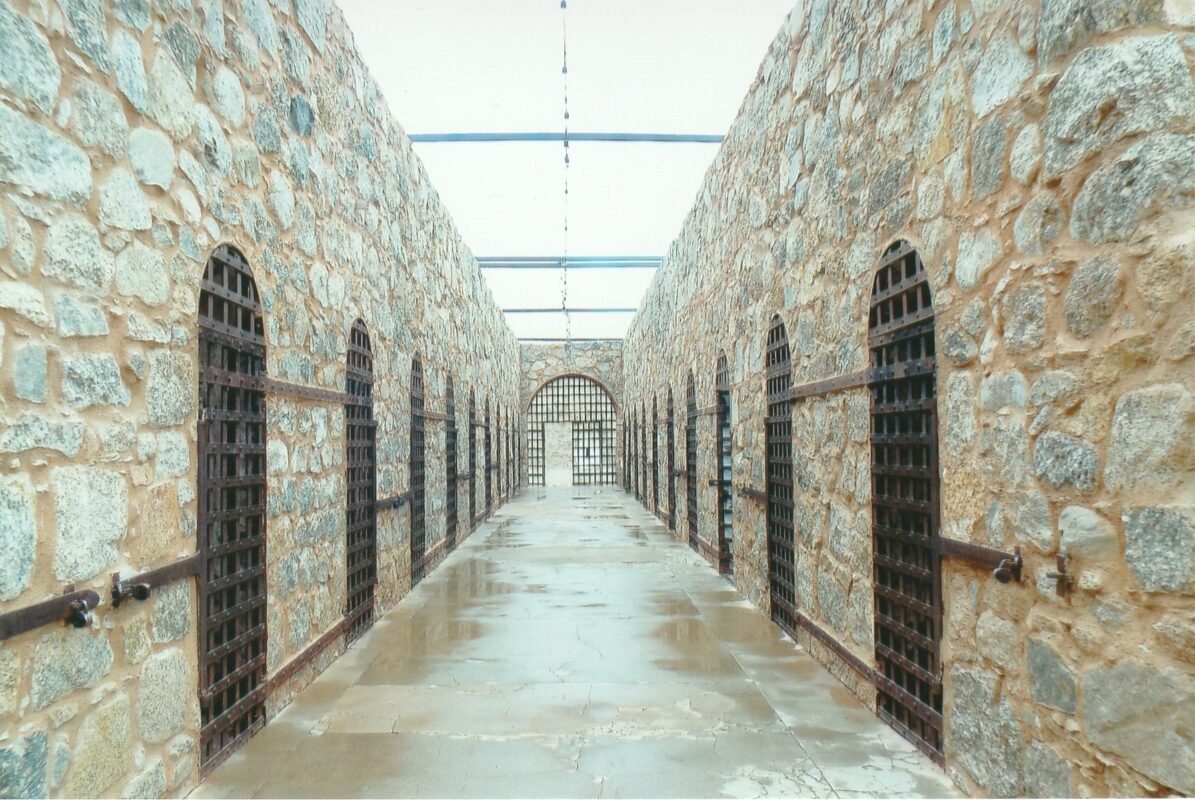Perched high above the Colorado River in the harsh desert landscape of southwestern Arizona lies one of the most infamous historical sites in the American Southwest—Yuma Territorial Prison. Operated for just 33 years, from 1876 to 1909, this foreboding complex still echoes with tales of its brutal past. With its rusted iron bars, underground cells, and bleak isolation, the prison has taken on a life of its own—both historically and paranormally. Ghost hunters, history buffs, and curious travelers alike are drawn to the sun-scorched ruins in search of a deeper connection to one of Arizona’s most haunted places. Whether you’re exploring its relentless history or chasing the whispers of inmates long passed, Yuma Territorial Prison deserves a place on your must-visit list.
The History
Birth of a Desert Fortress
The Yuma Territorial Prison opened its iron gates on July 1, 1876, becoming Arizona Territory’s third prison but the first to be built by the territory. Ironically, its initial cells were constructed by the first group of inmates themselves. Located on a bluff overlooking the convergence of the Gila and Colorado Rivers, the site was ideal: isolated, defensible, and brutally hot—a natural deterrent to escape.
The prison was considered state-of-the-art for its time. It featured electricity, running water, forced ventilation, and even a library with over 2,000 books—more than any other institution in the territory. It held both men and women and served as a repository for some of the Old West’s roughest characters: stagecoach robbers, murderers, and outlaws who wouldn’t hesitate to draw their Colt for a few gold coins.
Daily Life Inside the Walls
Despite its advanced amenities, life inside Yuma Territorial Prison was harsh and unforgiving. Temperatures in the summer regularly exceeded 110°F, making the iron-barred cells unbearably hot. Prisoners wore striped uniforms, were shaved bald upon arrival, and had specific work assignments, like maintenance, mining, or agriculture. Misbehavior was met with swift punishment. Infractions could land inmates in the notorious “Dark Cell”—a stone room with a heavy iron door, complete darkness, and minimal rations.
Overcrowding became a frequent issue. Designed for around 250 prisoners, the prison often housed well over 300. Despite the conditions, escape attempts were rare, and recaptures were common. Between harsh terrain, searing heat, and the swift justice of local posses, very few inmates made it far. In total, the prison housed over 3,000 inmates in its operation, including 29 women.
Prison Closure and Transition
By 1907, overcrowding became untenable, and the last prisoners were transferred to a new facility in Florence, Arizona, in 1909. Over the decades that followed, the site took on various identities: a temporary shelter for Yuma Union High School (earning students the nickname “Criminals,” still proudly used today), a Depression-era squat for hobos, and even part of a filming location for Western films.
Recognizing its historical and cultural significance, Arizona preserved the remains, officially designating the site as a state historic park in 1961. Today, the prison stands as a somber but captivating memorial to a bygone era—a perfect blend of dusty history and spectral mystery.
The Haunt
Lingering Spirits Behind the Iron Bars
With intense suffering, punishment, and death as part of its daily rhythm, it’s no surprise that Yuma Territorial Prison has developed a reputation as one of the most haunted locations in Arizona. Many visitors, especially paranormal investigators, report strange phenomena echoing through the old cell blocks and across the windswept yard.
The Dark Cell’s Unseen Prisoner
Perhaps the most infamous haunted location within the prison is the aptly named “Dark Cell.” This punishment cell—a pitch-black, solitary chamber carved from stone—was used to discipline unruly inmates. Prisoners placed here experienced total isolation, standing shackled in complete darkness with only bread and water for sustenance. Some inmates reportedly lost all touch with reality during their stay in the Dark Cell.
Modern visitors claim to experience extreme discomfort when entering the cell. Some report feeling watched. Others recount sudden cold spots, inexplicable shadows moving across the walls, or hearing chains rattle despite the room being completely empty. One particularly chilling account describes a guest being shoved as they entered the doorway—though no one was near them. Flashlight malfunctions and drained batteries are almost routine in this part of the prison.
The Cigar-Smoking Ghost
Another popular ghostly legend involves the lingering scent of cigar smoke. Although smoking is not permitted in the prison museum, visitors and staff alike have reported the unmistakable scent of cigars wafting through abandoned corridors. Some say it’s the ghost of an old warden or a prisoner who used to smuggle his favorite smokes. Paranormal teams have set up electronic voice phenomena (EVP) recorders on the premises and occasionally capture unexplained whispers or gruff male voices responding to their inquiries.
Woman in White: The Spirit of the Women’s Block
The prison housed 29 known female inmates during its years of operation. One of them, a woman jailed for poisoning her husband, is said to walk the remaining cells of the women’s cell block in the dead of night. Cloaked in a white dress, she has been seen peering out from the barred windows or standing silently in corners before vanishing into thin air. Tourists have reported a sudden drop in temperature and overwhelming feelings of sadness when passing through this section of the prison.
Electronic Disturbances and Equipment Failures
Paranormal investigators visiting Yuma Territorial Prison often describe strange interference with their instruments. Digital cameras fail to focus, batteries drain instantly, and temperature sensors pick up bizarre fluctuations. Dowsing rods and EMF detectors frequently spike irregularly when brought into the cellblocks. One investigator even claimed her spirit box picked up a voice saying, “Still here,” just as she stepped into the Dark Cell alone.
Testimonials from the Other Side
Perhaps most compelling are the testimonies from ordinary visitors. Many leave messages in the guestbook praising the historical tour but also mentioning strange sensations—hairs standing on end, sudden goosebumps—especially near Cell 14, where notorious murderer William “Buckey” O’Neill once served time. Ghost tours often conclude with dozens of patrons swearing they saw a shadow flit across the walls or caught a whisper in an otherwise silent corridor.
Planning Your Visit: A Ghost Hunter’s Dream
Whether you’re into gritty Wild West history or unexplained phenomena, Yuma Territorial Prison delivers a one-of-a-kind experience. The state historic park is open daily, and visitors can explore the cell blocks, guard towers, solitary cells, and museum exhibits. Nighttime ghost tours are offered periodically, most often during the fall and around Halloween, and they sell out quickly due to increasing interest in the prison’s paranormal reputation.
Bring your camera, your spirit box, and maybe a friend (or two). But don’t forget to respect the spirits who’ve never left—for some, this prison is still their home.
Conclusion: A Must-Visit for Paranormal Enthusiasts
Steeped in legend, layered in history, and brimming with spectral energy, Yuma Territorial Prison is far more than a tourist attraction—it’s a gateway into Arizona’s haunted past. For ghost hunters and paranormal researchers, the prison offers an active site filled with documented hauntings, historical trauma, and a palpable tension that persists in the desert air. Where else can you walk through authentic 19th-century cells, hear the echoes of lost convicts, and maybe—just maybe—feel a whisper from beyond?
Whether you’re chasing history or hoping to catch a glimpse of the unexplained, Yuma Territorial Prison should be at the top of your ghost-hunting itinerary. Charge your equipment, steel your nerves, and journey into the past—you never know what (or who) you’ll find waiting for you inside those iron-barred walls.

